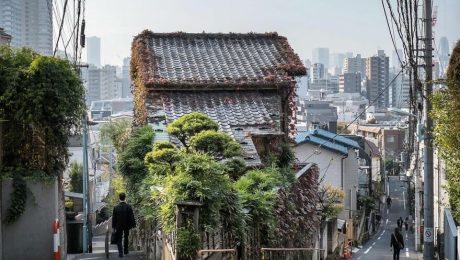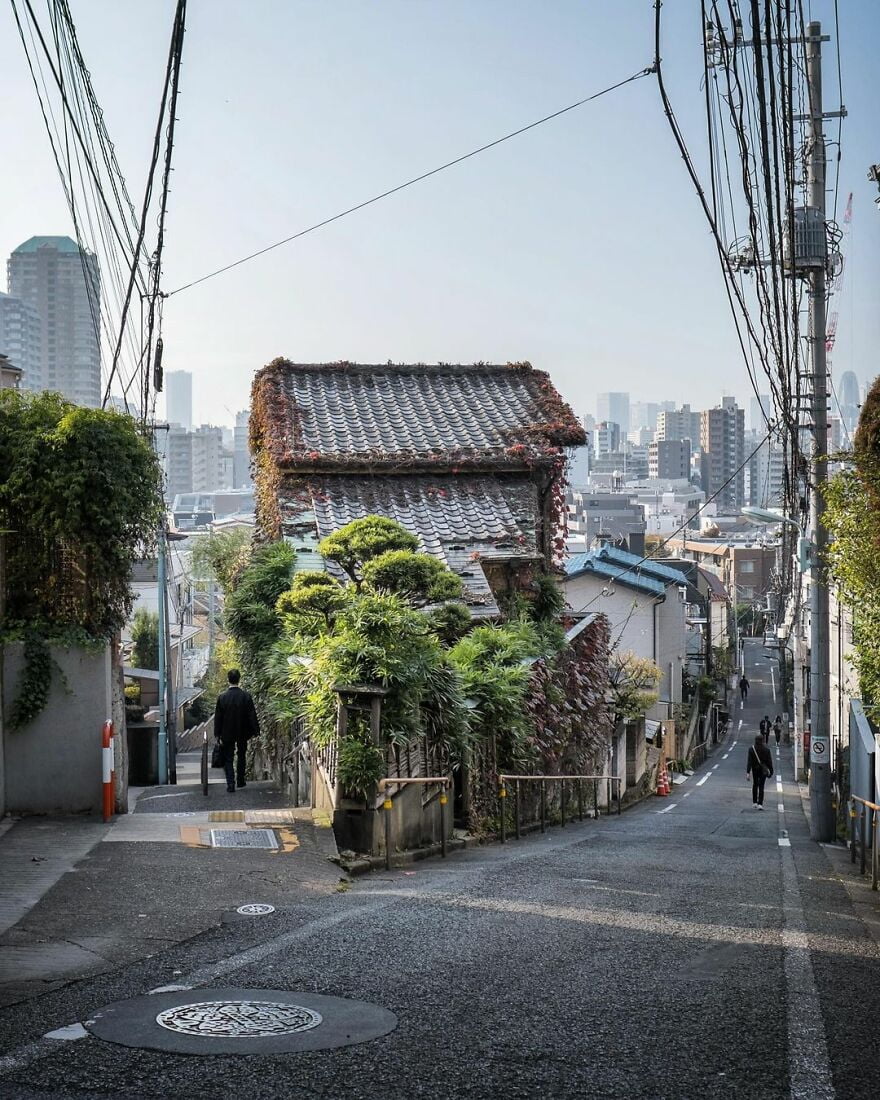“Hinashizaka Slope on the left, and Fujimizaka Slope on the right. Apparently you could see Mt Fuji from here on the early 1900s. Likely blocked nowadays.”
Old Architecture Looks Like In Japan (30 Pics)
History, although not always correct, is very important to our society. Without it, there would be no traditions to follow today, culture to appreciate, or memories of our ancestors that we can learn so much from.
Instagram account Japan Property Central shares a really important part of history—architecture. Their photographers travel around Japan, capturing the oldest buildings and how they look. How they’re being used today. Many of them have been repurposed to be something else, like hotels, shops, or even homes.
The buildings are really beautiful and unique. The way they harmonize with the modern world around them is an amazing sight to see. These buildings are like monuments of history, a portal which transports you to old times.
More info: Instagram | japanpropertycentral.com
We got an interview with Zoe. She told us the main goal behind these photos: “To share the interesting buildings and homes in Tokyo and other parts of Japan, and the history and stories behind them. The older homes may be at risk of being demolished and redeveloped, so I want to try and document them while they are still standing. Sometimes I am too late.”
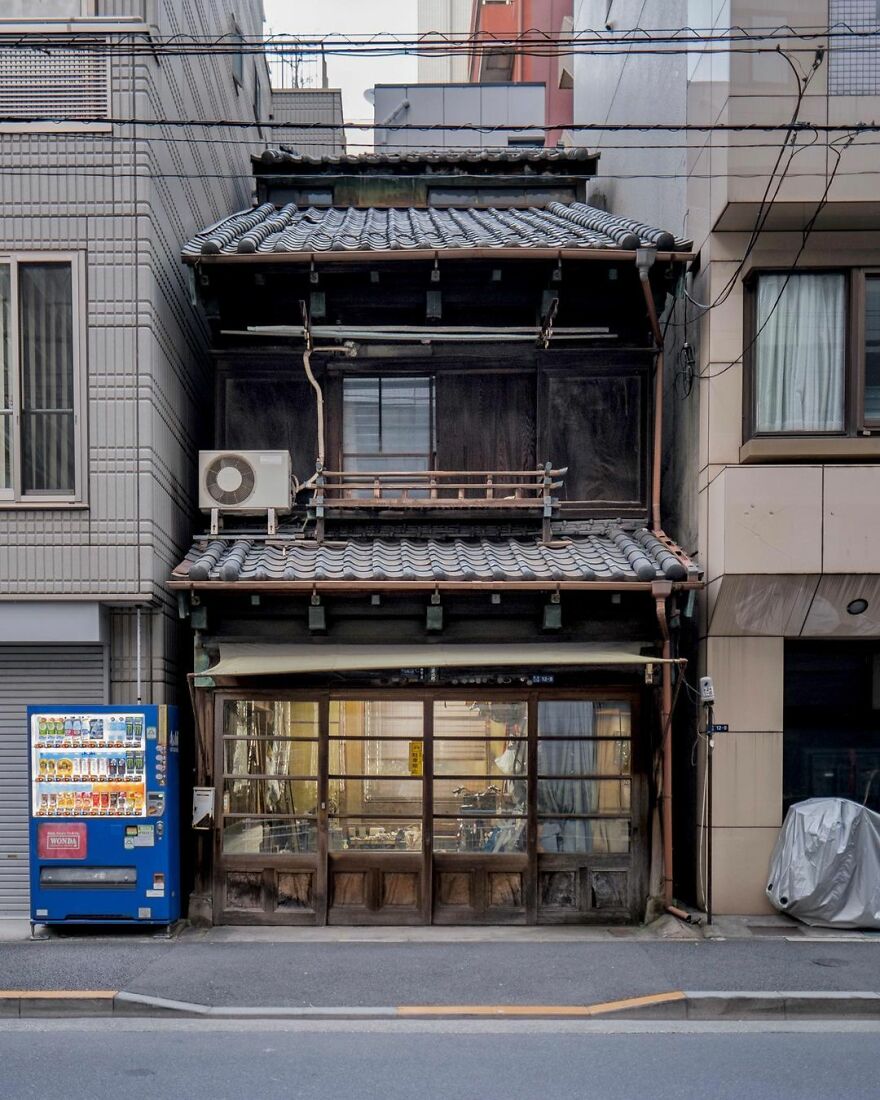
“A tatami shop in Tsukiji, Tokyo. Built sometime in the 1920s or 1930s, and still seems to be operating today. The building is a great surviving example of the pre-war shophouses found in Tsukiji and around Tokyo’s other historic merchant districts. If you look at the roof line you can see a line of windows showing a 3rd floor or attic that may have been added at a later date.”
japanpropertycentral Report
Here’s how Zoe got into photographing these buildings: “Out of necessity. I run a real estate brokerage and the property photos we receive from listing agents do not always show the property in the best possible light. Many times there are no photos at all. Many of our buyers are foreigners and expect high-quality photos before they will decide to inspect a home or apartment, especially if they are flying in from overseas. Often I will have to go and take the photos myself. I am still very much a beginner at photography.”
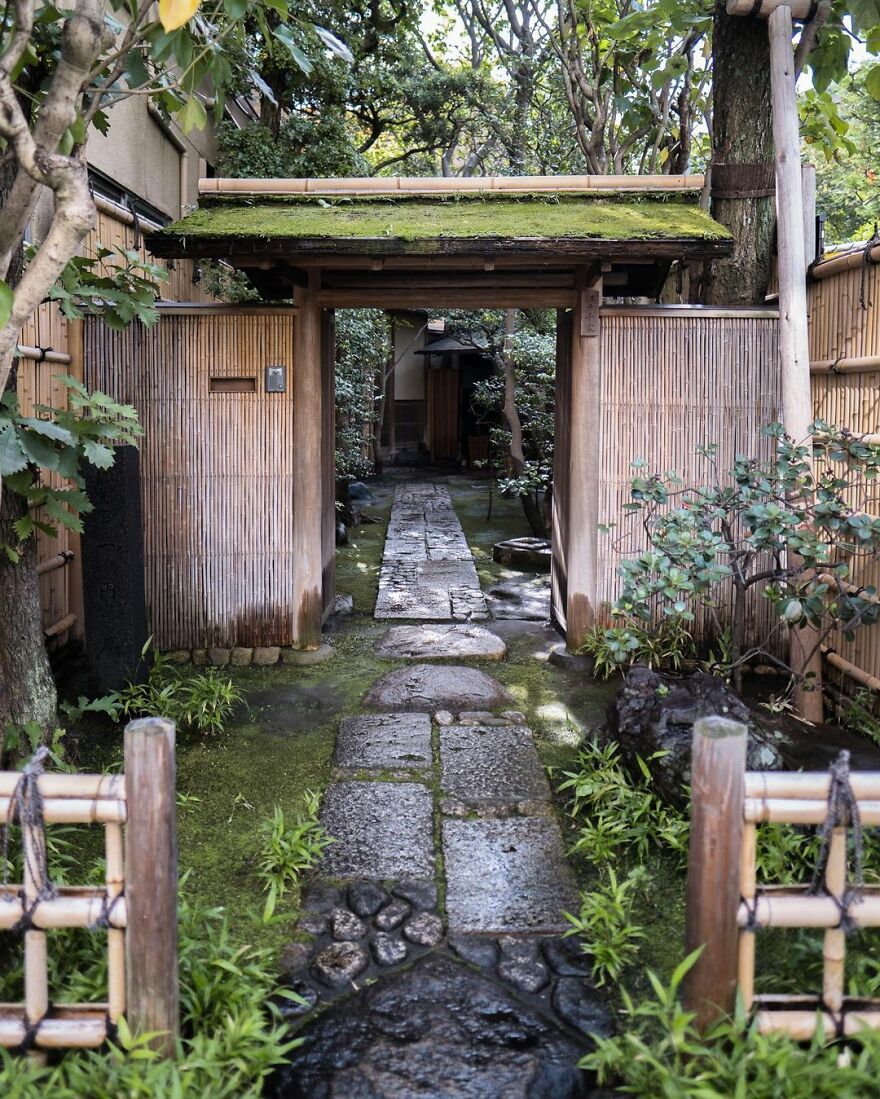
“The entrance to the Edo Senke tea ceremony estate in Ueno, Tokyo. The buildings are historic, having been shifted here from a Daimyo’s mansion in the 1860s. Wooden tea houses are relatively easy to dismantle and relocate, and it wasn’t unusual for old buildings or even parts of them to be moved and reused. It still happens today on occasion. When people talk about Japan’s scrap-and-build approach to buildings, they are not referring to the traditional construction methods that last centuries. Alas, the grounds of this estate are privately owned and not open to the public.”
japanpropertycentral Report
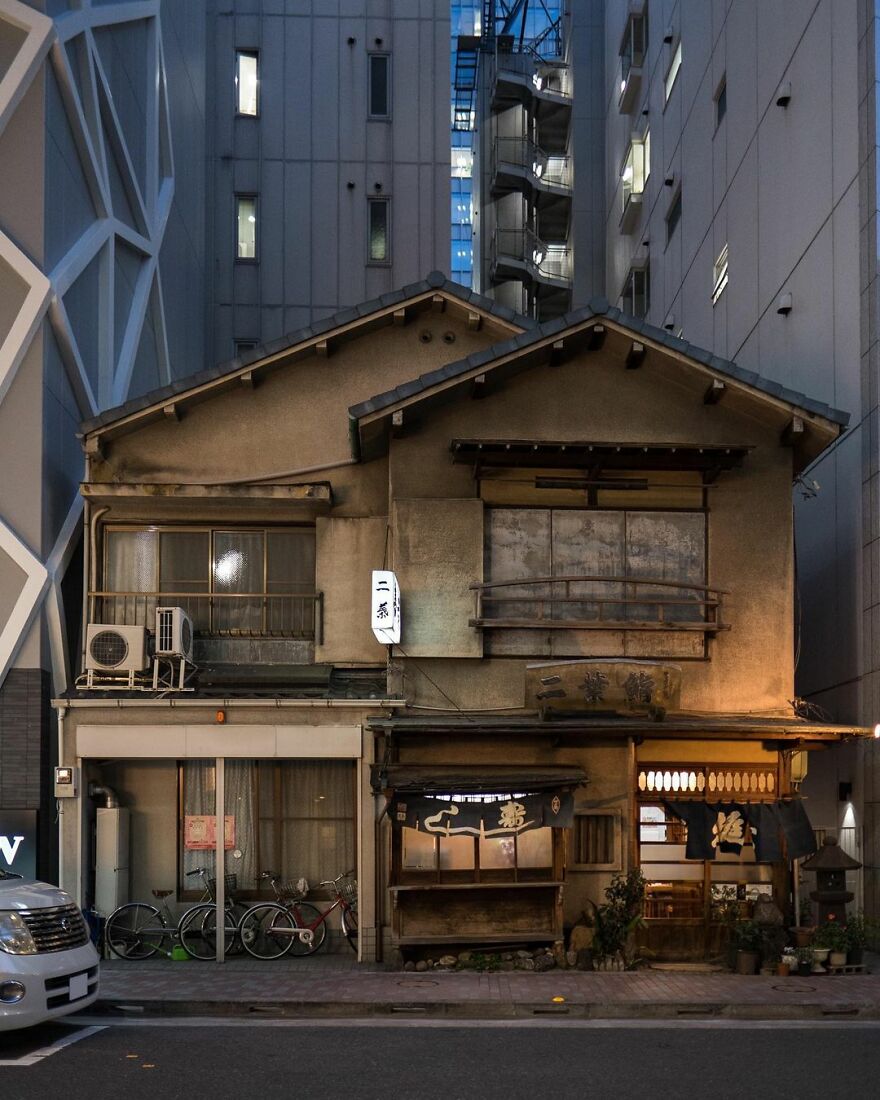
“Futaba Sushi, Ginza. First opened in 1877. The current building dates from the 1950s. Note the sushi ‘yatai’ cart built into the ground floor, right in the center. Sorry, no photography allowed inside the restaurant.”
japanpropertycentral Report
Zoe shares the difficulties she runs into while capturing the photos: “Trying to get a shot without a car or van blocking the building. I usually wait until there are no pedestrians or cars in the frame. It might only be a few minutes, but other times I have to come back later. Another challenge is that the streets are often very narrow (some streets are just 2 meters wide), so you need a wide-angle lens for some locations.”
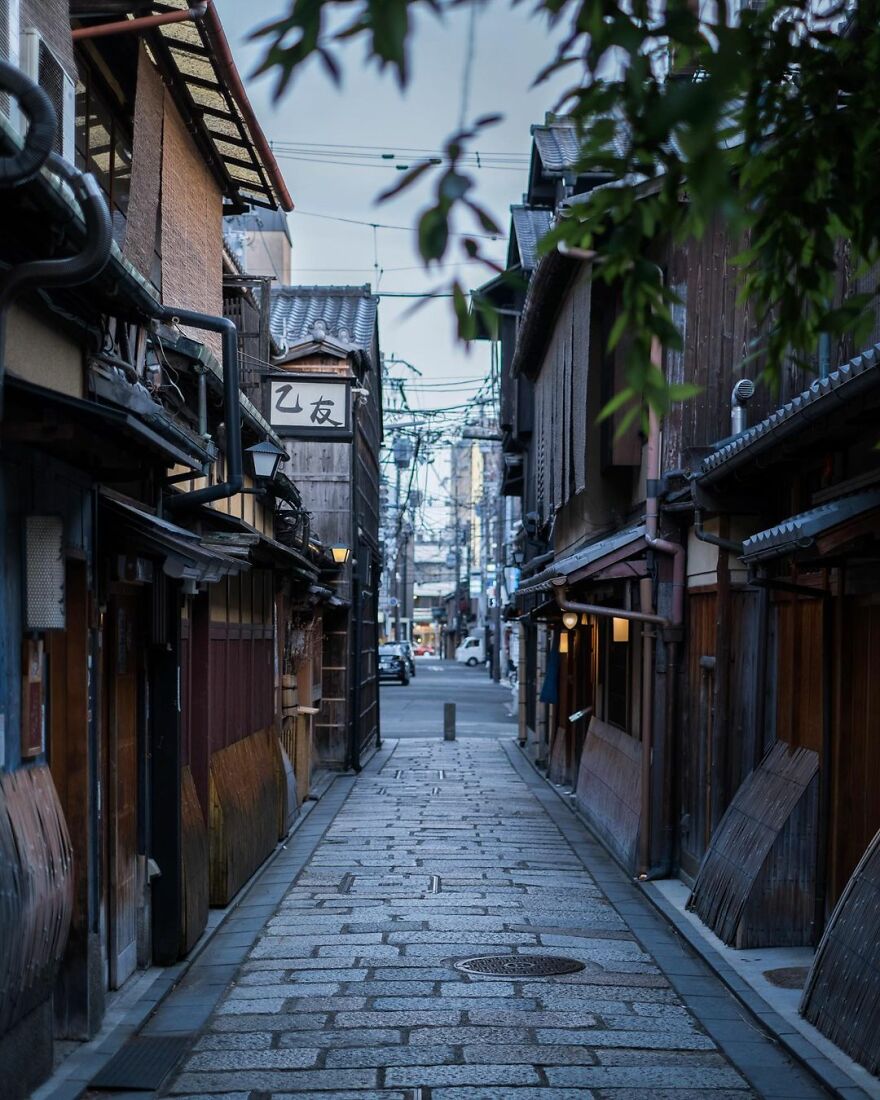
“Gion Shirakawa at dusk. This laneway is a cobblestone shortcut near Shirakawa River. If you follow it you’ll end up at Shijo Street.”
japanpropertycentral Report
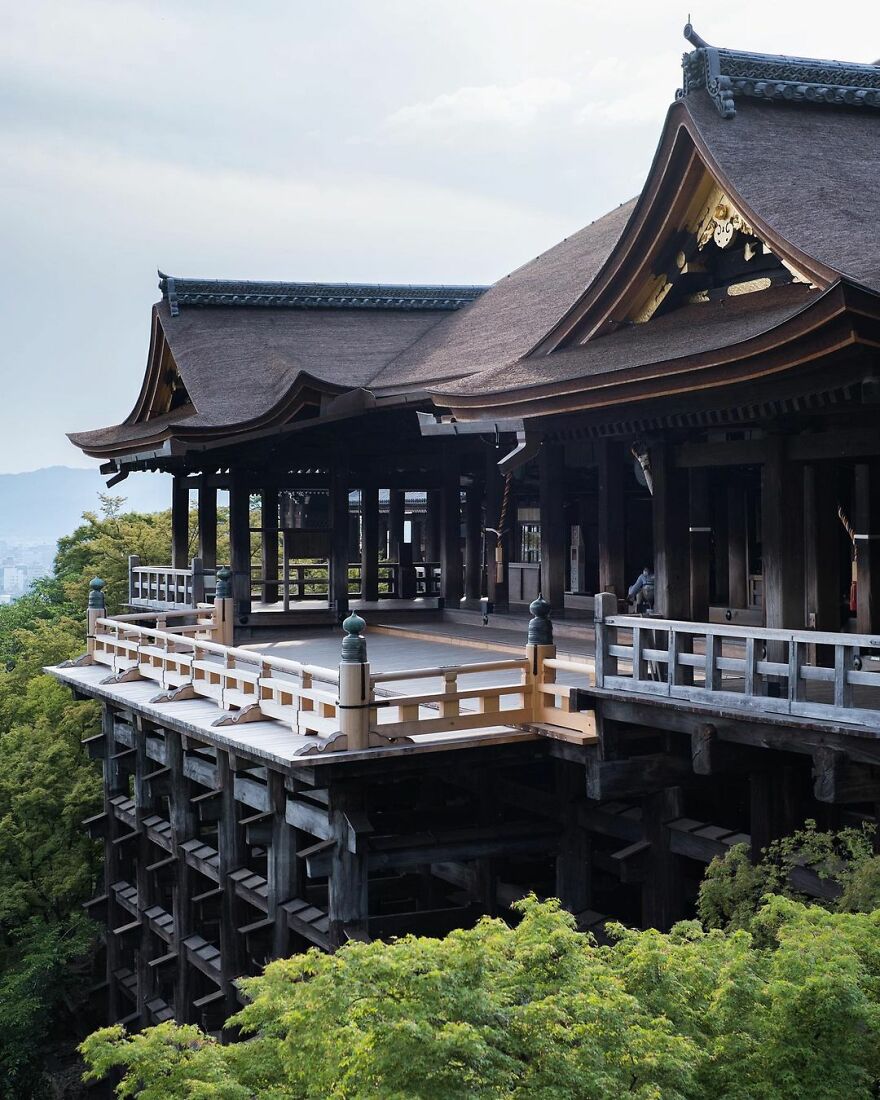
“Kiyomizu-dera Temple and its hinoki wood stage. Founded in 778. I wonder if this is the quietest it has ever been in its 1200 year history. The main hall and stage were built entirely without the use of nails (or screws) in 1633. The wooden foundation pillars below stand 13 meters tall and are made from 400-year old trees.
The main hall was covered in scaffolding for over three years while the roof was redone, and only just removed in February 2020. It had been 50 years since the bark-thatched roof had been replaced.
Many of the buildings within the temple grounds date from the mid-1600s. There were a few fires up until that point that had destroyed the even older structures.”
japanpropertycentral Report
“In my free time, I like to explore different neighborhoods and share some stories about the interesting buildings I find along the way. If I have an afternoon or an evening free, I’ll go for a walk around all the back streets of a neighborhood in search of some interesting buildings. You are almost guaranteed to find a few no matter where you go. Sometimes I will have a particular house in mind, or be in the neighborhood checking out listings for sale and use it as an opportunity to explore a little and take some photos.”
Here is how Zoe describes her style: “Chaotic. The city is just a jumble of power lines, street signs, bicycles, and construction. I would love to take clean and uncluttered photos but I am realizing that it is impossible in Tokyo. I no longer notice all the transformer boxes and power lines anymore.”
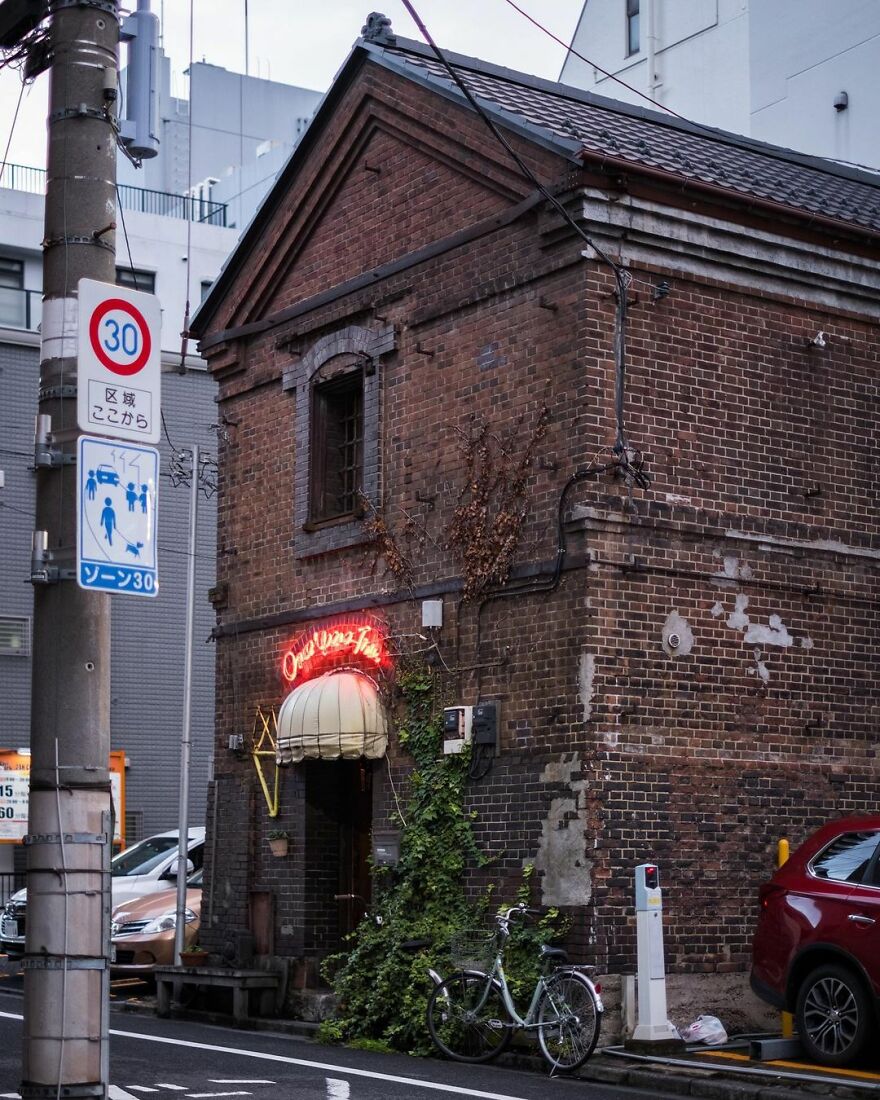
“Once Upon a Time. A bar in a historic brick storehouse in Yushima, Tokyo. Built sometime in the late 1800s. The bar owner has been renting this space since the mid-1970s. Downstairs has a bar counter and tables, while the 2nd floor has an event space.
Not sure how much longer this historic building will remain standing. The property owner wants to demolish it rather than repair it, with news of its potential future demise first reported back in 2013. Last year there were stories that it would close in 2022.”
japanpropertycentral Report
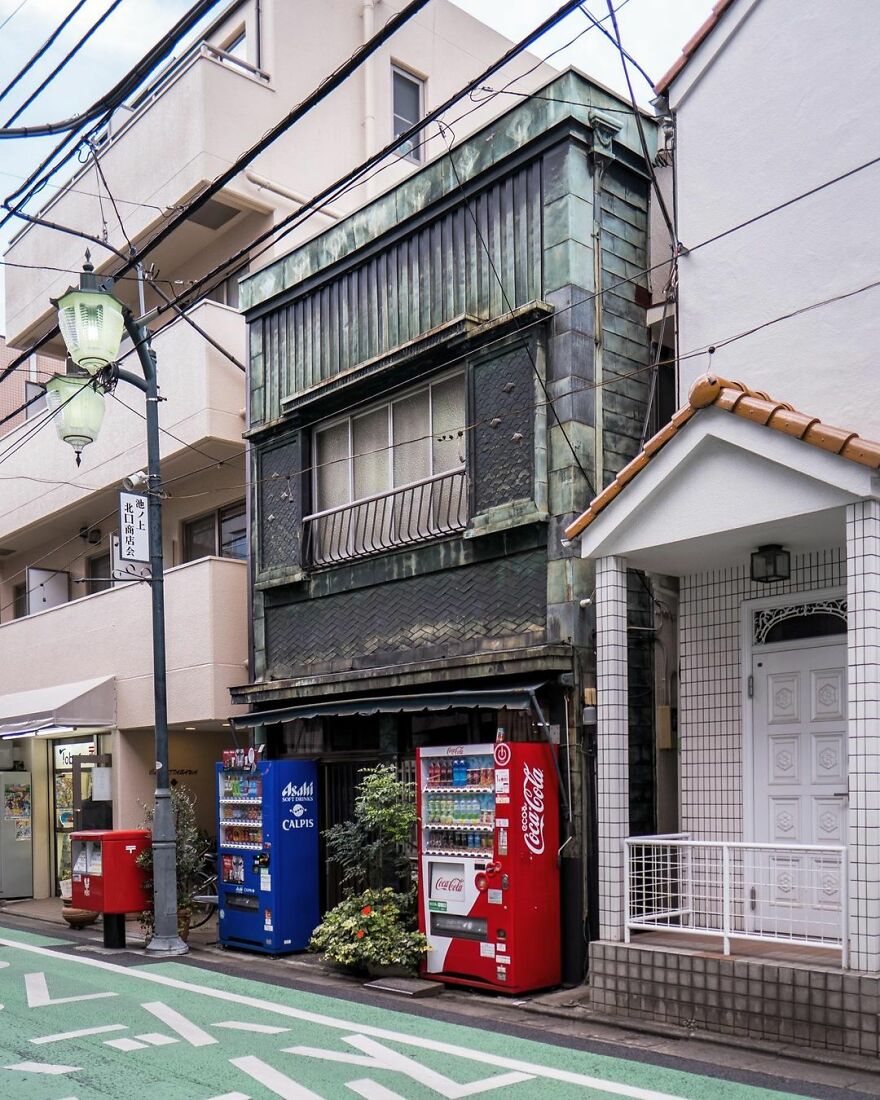
“An old shophouse alongside the Ikenoue Shopping Street in Tokyo. This would have once had a shop on the ground floor, but has been converted into a private residence some time ago.”
japanpropertycentral Report
“It has always been a personal interest. There’s an assumption that Tokyo is a big metropolis of shiny glass buildings and neon lights, but it’s a very old city with lots of more humble, older, and traditional streets that don’t get featured in the tourist guides. Something is charming about them, especially when they have a very worn patina and are lived-in and cared for,” said Zoe about how she came up with the idea to photograph old buildings.”
I started putting more effort into my company’s Instagram account about three years ago. I still have a very long list of places to share and neighborhoods to visit. I don’t think I will be stopping any time soon.”
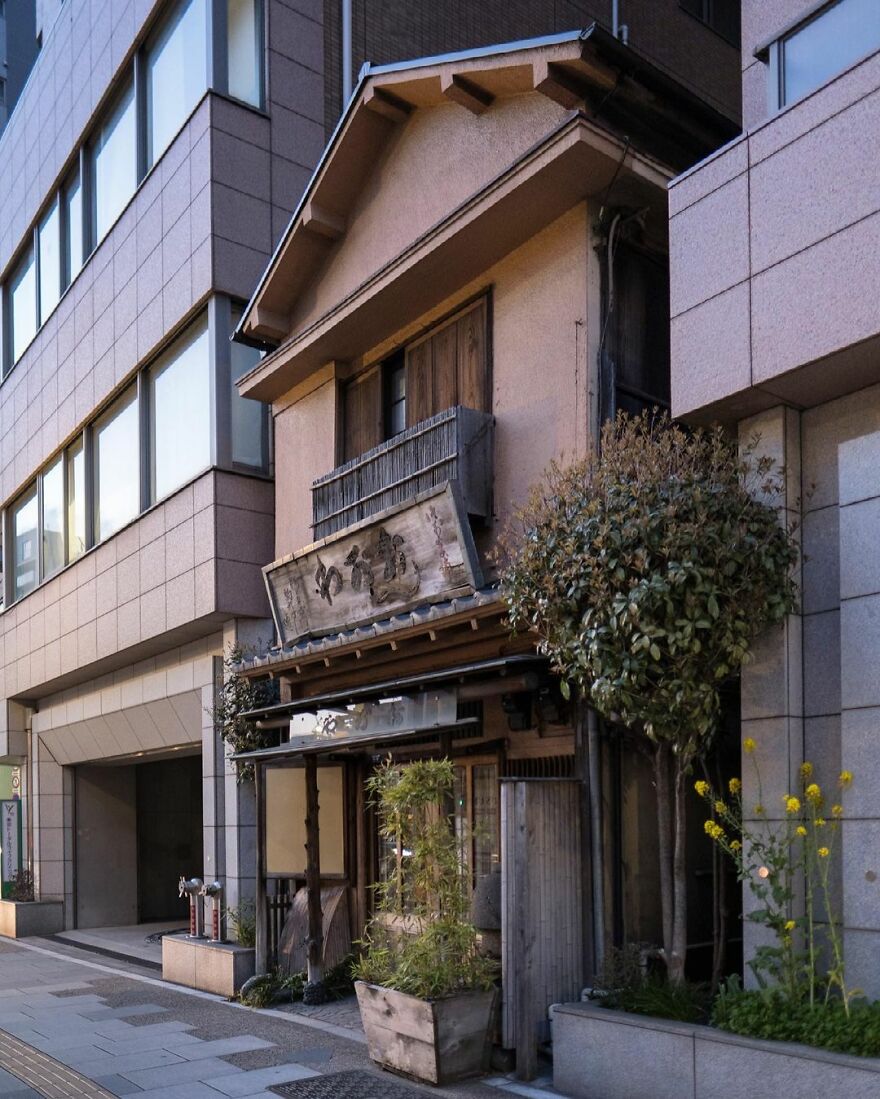
“The Ogawa Dorayaki Store alongside Asakusa-dori Avenue. Dorayaki is made from two pancakes or pikelets with red bean paste filling. This little shop was a hold-out, and is now sandwiched between a 13-story office building on all three sides.”
japanpropertycentral Report
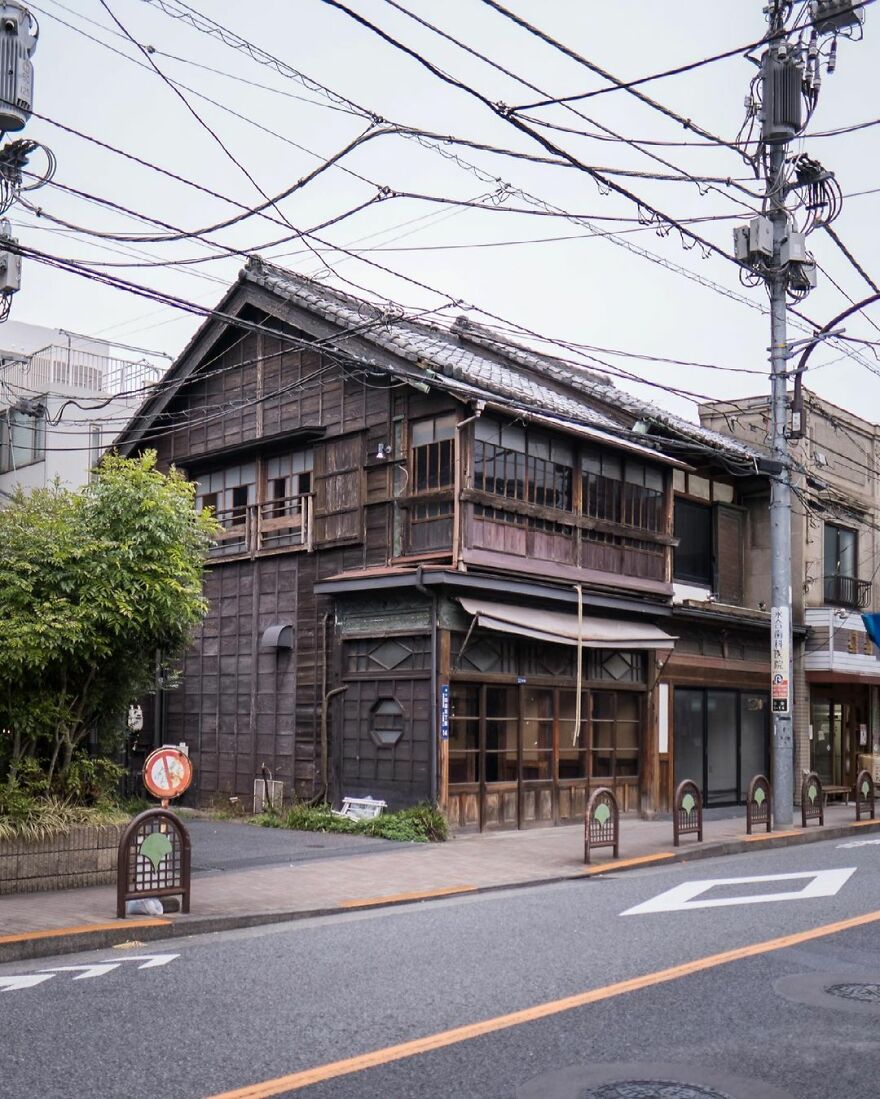
“This shophouse was built in 1918 as a hardware store. At a later point it housed a bar and restaurant but has sat vacant for the past few years.”
japanpropertycentral Report
“There’s something about living in a constantly evolving city like Tokyo that is very energizing and motivating. There’s always something to see or somewhere to visit. It’s also a very safe and clean place to live, and it is incredibly easy to get around by train with no need for a car. Some of the architects and building designs are among the best in the world. My favorite ones are the weird and unusual homes often built on tiny plots of land in the middle of the city. You have to be very creative to come up with some of the designs, especially when the land itself might be just 50 square meters in size.”
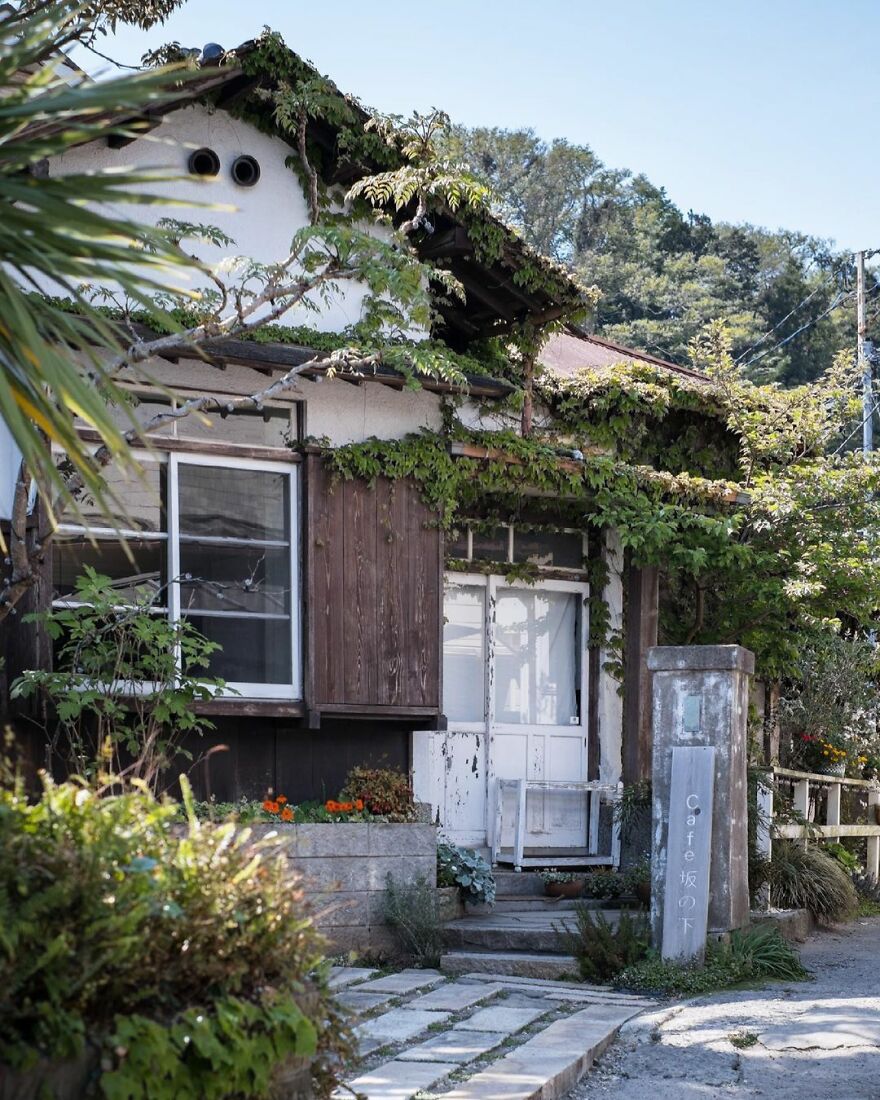
“Café Sakanoshita – a charming place inside a 90-year old renovated kominka house. Closed on Mondays. Unfortunate timing!”
japanpropertycentral Report
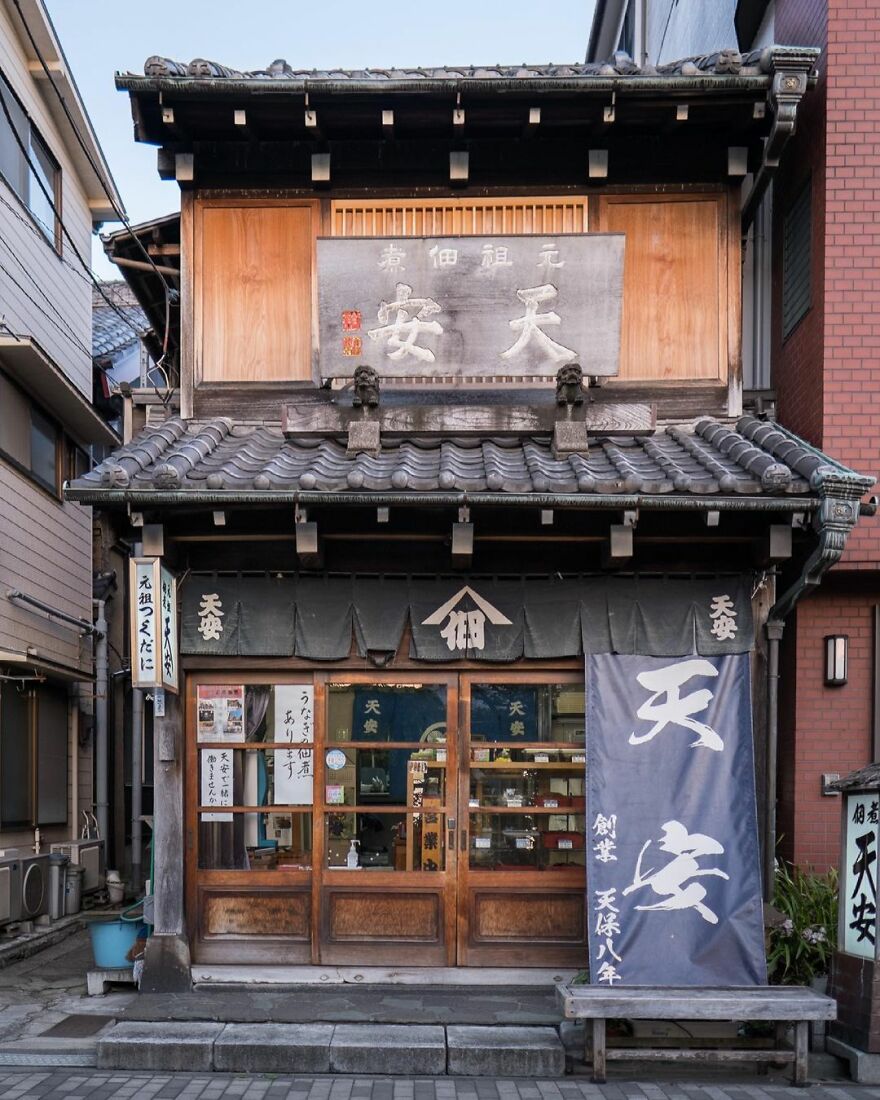
“Tenyasu Tsukudani, a store selling simmered and preserved food since 1838. This shophouse was built in the 1920s. The streets would have once been lined with buildings like this.
This part of Tsukuda has a history going back 400 years, and is where the traditional tsukudani preserved food originated.”
japanpropertycentral Report
Here is what inspires Zoe: “Being able to continue to connect with all kinds of wonderful people who are also into Japanese architecture, new and old, and who like to explore different neighborhoods. The most unexpected and fun part is seeing sketch artists in other countries create amazing artwork from photos I posted.”
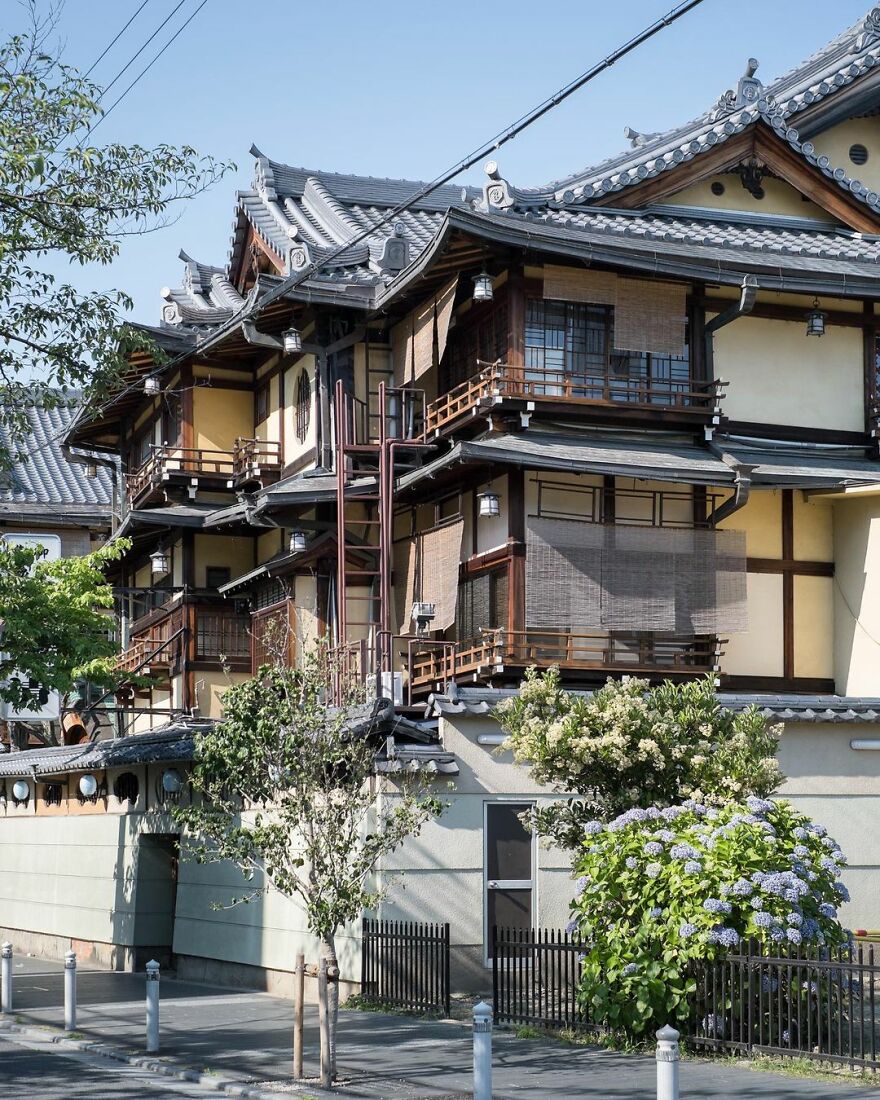
“Tsuruse traditional inn and kaiseki restaurant. Built from Hinoki cypress wood in the 1920s~1930s, but the restaurant has been operating even longer. The outdoor terrace dining deck along Kamo River is the largest of its kind in Japan, seating over 200.”
japanpropertycentral Report
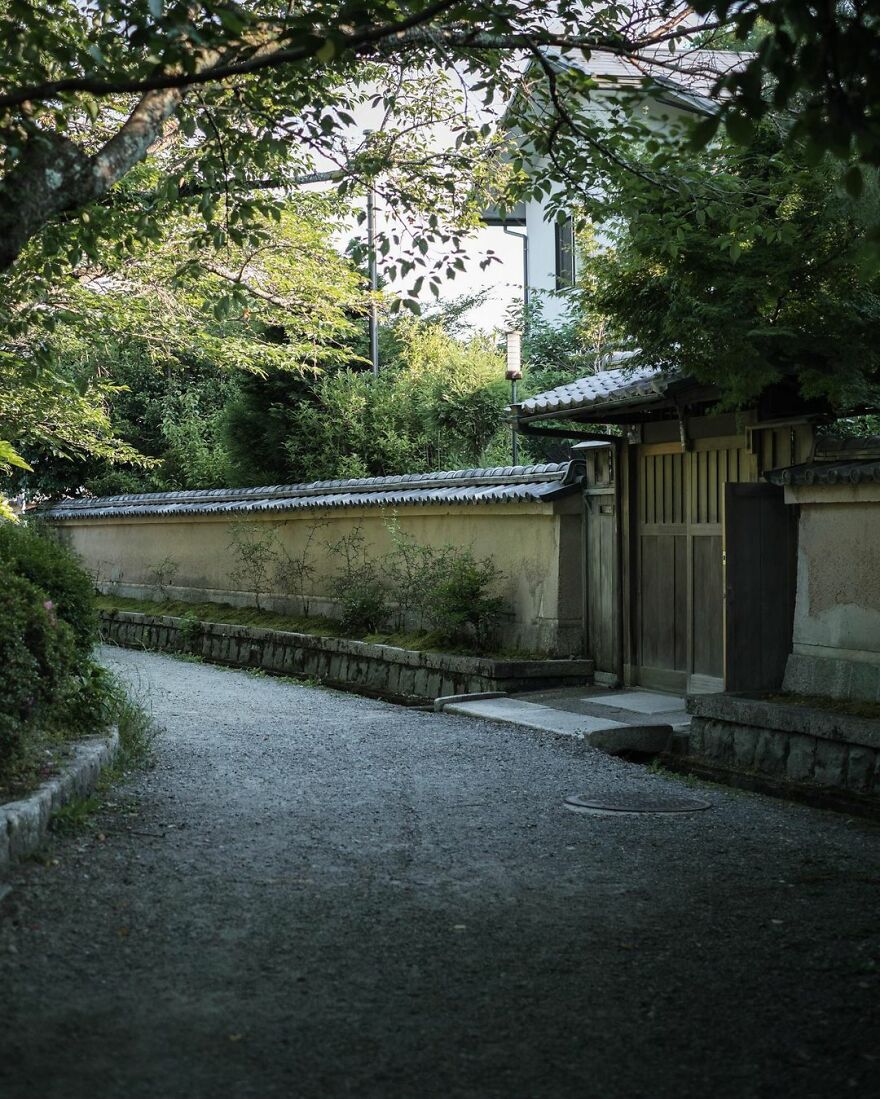
“The Philosopher’s Path (or walk). A peaceful path alongside the Biwa Canal. The historic canal was completed in 1890 and the 1.8-kilometer long walking trail was completed in 1968 thanks to efforts by local residents. It was named to honor Nishida Kitarō (1870-1945), said to be Japan’s most influential and significant philosopher of the 20th century. He would walk along this path each day on his way to teach at Kyoto University. He later moved to Kamakura, and his home there has been preserved to this day.”
japanpropertycentral Report
Zoe gives some advice to photographers and artists out there in the world: “It’s okay if you don’t know what you are doing or don’t have a particular goal with what you are currently doing. Do what makes you happy and gives you the most joy creating. Maybe it will lead you somewhere?”
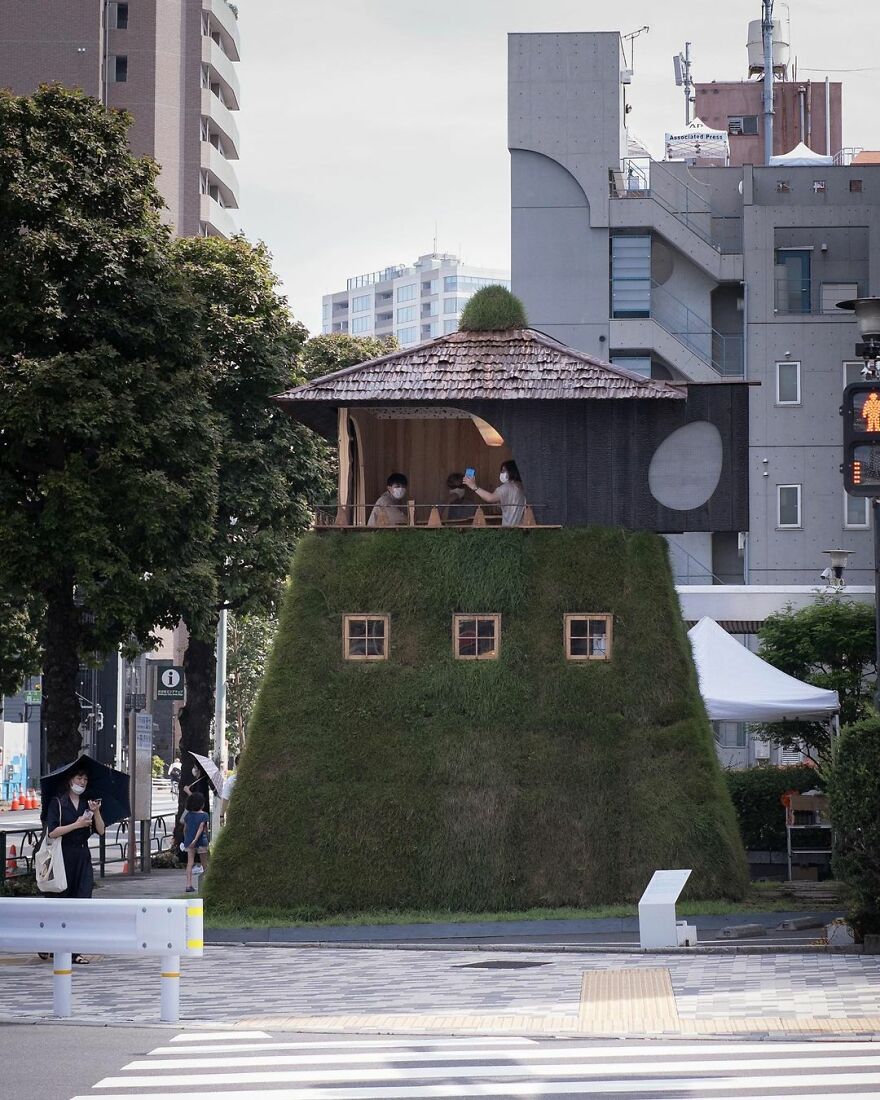
“Tea House ‘Go-an’ by Terunobu Fujimori. Part of the Pavilion Tokyo 2021 / Tokyo Tokyo FESTIVAL being held in connection with the 2020 Olympics. Fujimori is known for his creative and often elevated tea house designs that are far from traditional. This one resembles a ‘yagura’ watchtower with a grass-covered base (the same turf used on race tracks) and burnt cedar walls. The ceiling is decorated with crushed cedar pieces. To enter, you must crawl through a small circular door at the rear and climb a ladder to the tea room upstairs. The tea house is a temporary structure and will be disassembled when the exhibit ends on September 5, 2021. Viewing the interior requires advance bookings.”
japanpropertycentral Report
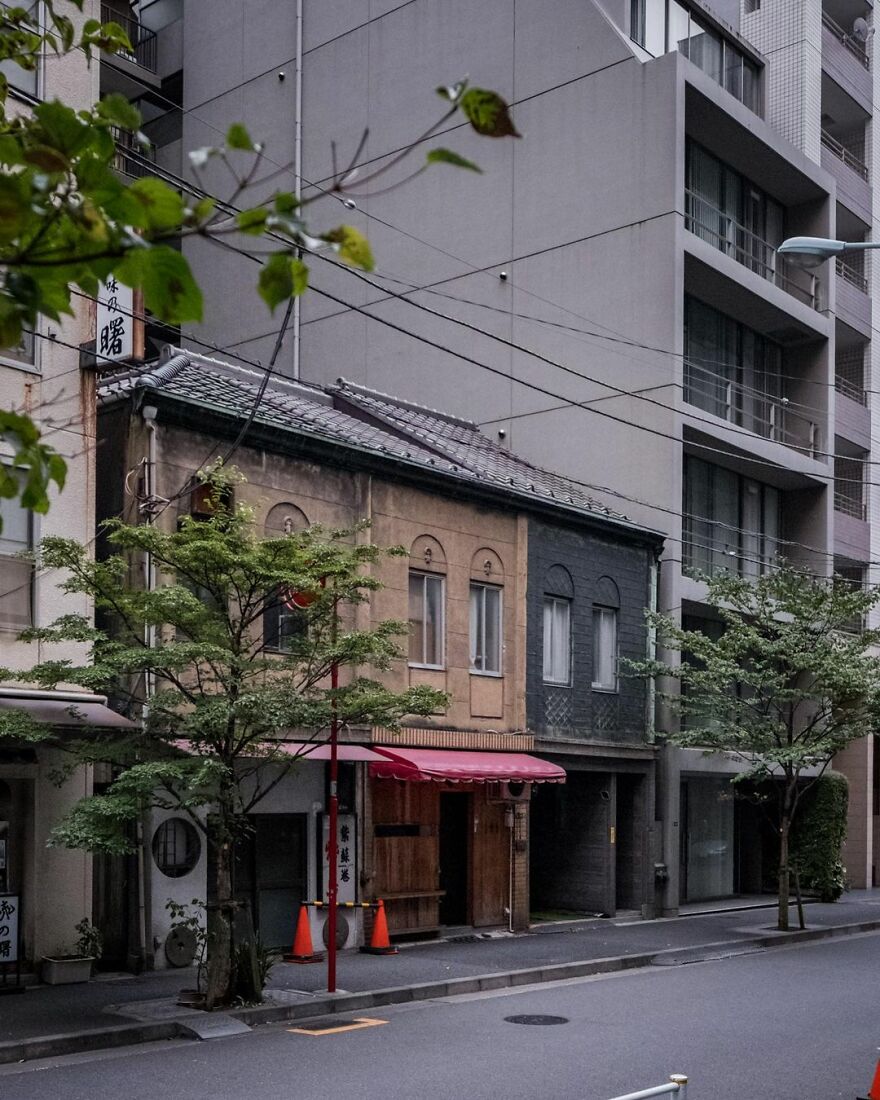
“This group of three shophouses in Nihonbashi was listed for sale a little over a month ago for ¥149 million (US$1.35 million), and appears to have already sold, if the removal of all of the online listings is any indication. That means demolition is likely looming.
The terraces date from the 1920s or 1930s and are on Chuo City’s list of early 20th century modern architecture. Sadly being on that list, or having any type of official heritage recognition, doesn’t provide any legal protection to prevent these historic buildings from being demolished. A few from the list have been torn down in recent years, and more will follow. They are a wonderful example of kanban-kenchiku (#看板建築), or billboard style architecture.
The terraces sit on 92 sqm of commercially zoned land, and some suggested redevelopment plans for a 13-story block of 17 units with a potential gross yield of 8% have been provided. That’s a hugely impressive yield and a very low price for land like this. There’s a good reason, too – the land is leasehold. It’s the old, and almost perpetually renewable leasehold type, and the landowner is a major real estate company, so there is some stability with that type of landlord.
The majority of land in Tokyo and across Japan is freehold, but occasionally you might encounter a leasehold property. It’s really important that you fully understand the costs, pros and cons, and legal entitlements and obligations that come with leasehold properties, as they can easily be a source of disputes and troubles for the inexperienced.”
japanpropertycentral Report
The author tells us more about herself and her journey: “I first moved here about 15 years ago, after growing up in a rural part of Australia. I first got involved in the real estate industry in Japan in 2008 and opened my own real estate brokerage company in 2014. I did not speak any Japanese when I first moved here but studied for a long time after I arrived. You need to be fluent to work in real estate here as all of the sellers and agents will only speak Japanese, and all of the documentation and legal explanations are also in the Japanese language only.”
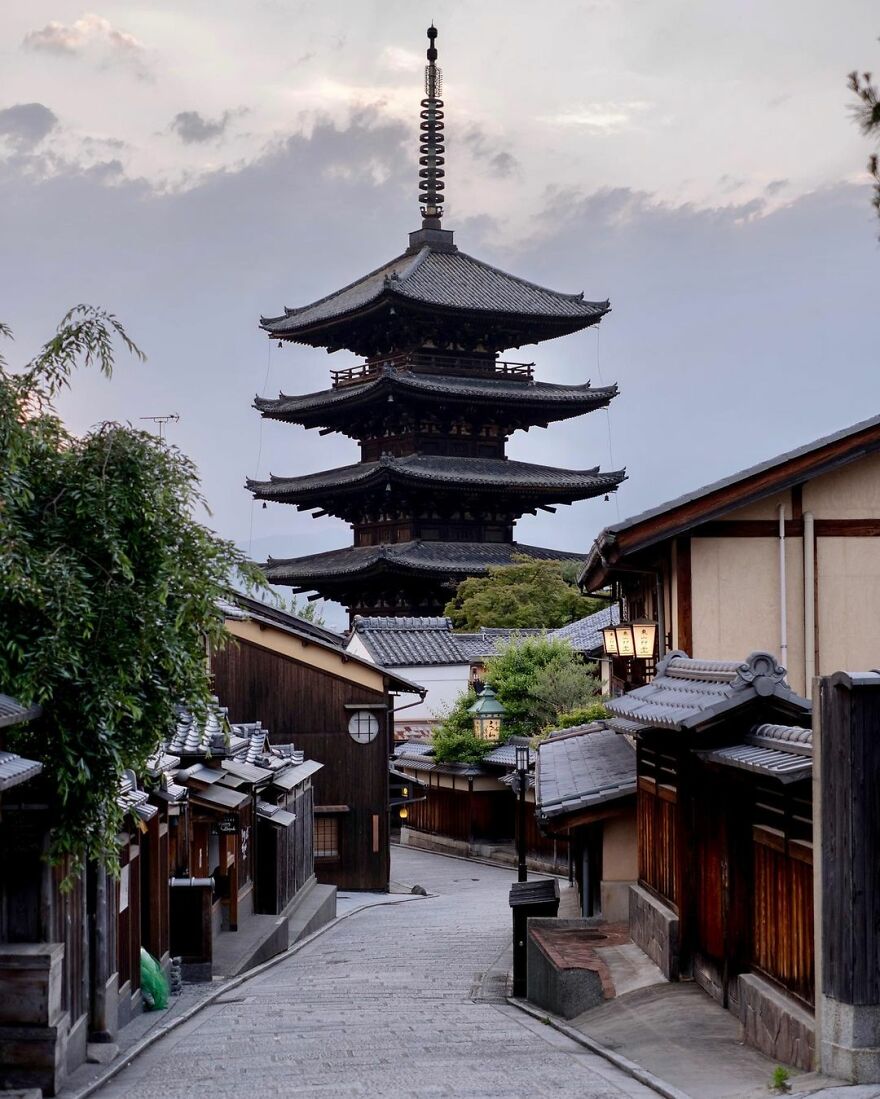
“The Yasaka Pagoda in Hōkan-ji Temple, Kyoto. First built in 592. It was destroyed in a fire in 1191 that broke out after a dispute between Kiyomizu Temple and Yasaka Shrine and had to be rebuilt. In 1291 it was struck by lightning and rebuilt in 1309. It was lost again to a fire in 1436. The current pagoda dates from 1440, making it 581 years old. The foundation stone for the central pillar of the pagoda is said to be the original one from over 1,400 years ago.”
japanpropertycentral Report
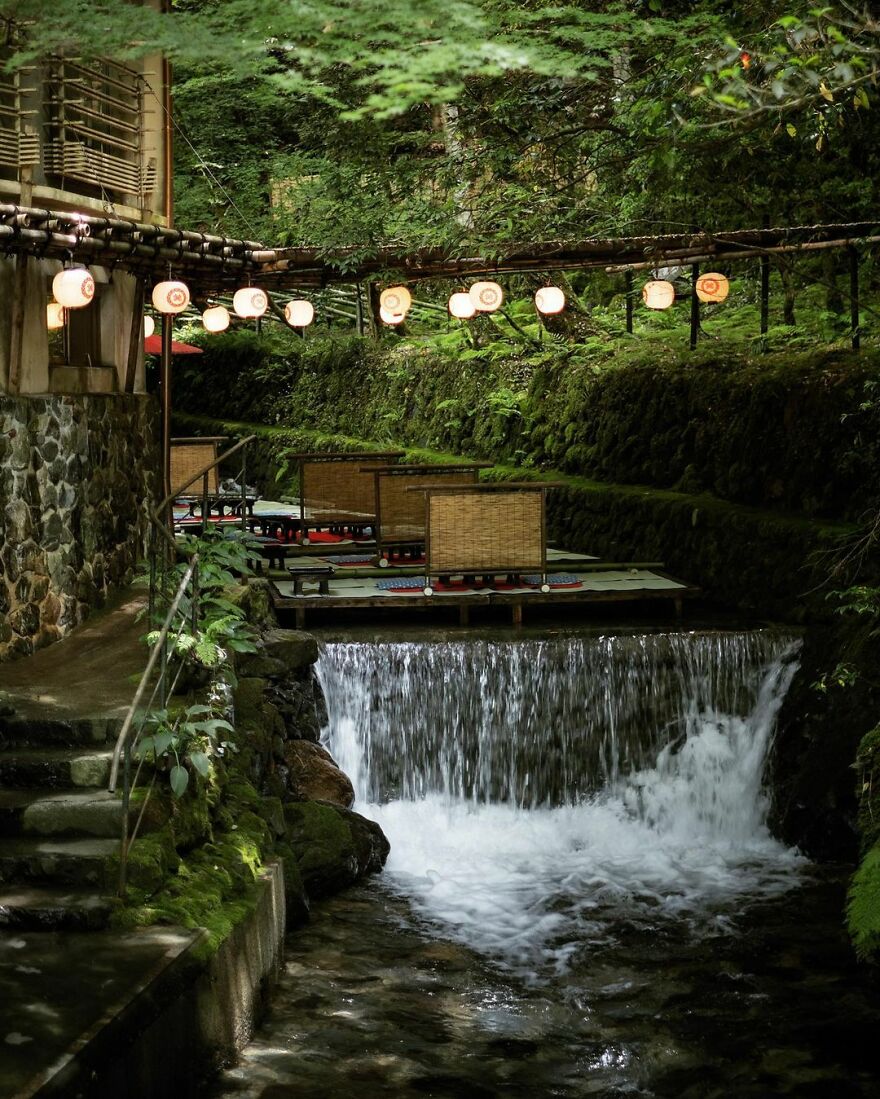
“Fujiya Ryokan and its ‘kawadoko’ river floor dining set up for the hot summer months. These floating floors first appeared over the Kibune River in the 1910s~1920s and have become a summer tradition ever since. Several restaurants and ryokans along this section of the river set up these tatami dining areas each year.
Fujiya Ryokan has one of the longest histories in the area, having been founded in the 1830s~1840s. ”
japanpropertycentral Report
“If you do get the chance to visit Japan in the future, don’t be afraid to skip some of the over-touristy areas and explore some of the more local neighborhoods. Instead of Shibuya Crossing, for example, I would go for a wander to try all of the coffee shops around Yoyogi-Koen, a 15-minute walk north, or head a few stations over to Shimokitazawa for some vintage clothing. If you are into old architecture, there is the Edo-Tokyo Open-Air Architectural Museum in Tokyo and the Meiji-mura museum in Nagoya (highly recommended!). Otherwise, you can still see a few old buildings around Tokyo’s former merchant districts like Tsukiji and Nihonbashi.”
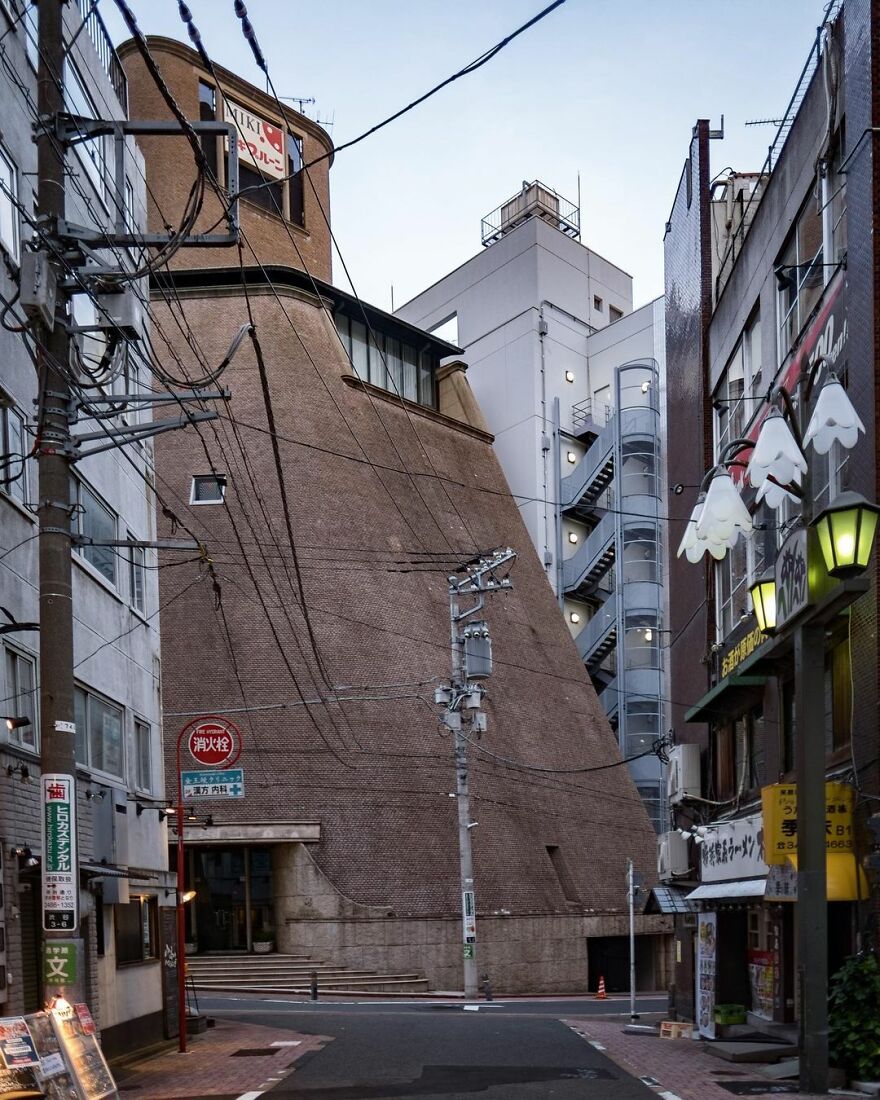
“The offices of a prune company near Shibuya Station. Designed by Yuzo Nagata on behalf of Takenaka Corporation and built in 1985. The facade is clad in small granite tiles. Nagata founded his own architectural practice that same year. His works are often statement pieces with detailed tiled facades. Several of his designs are large private residences, including one in Omotesando.”
japanpropertycentral Report
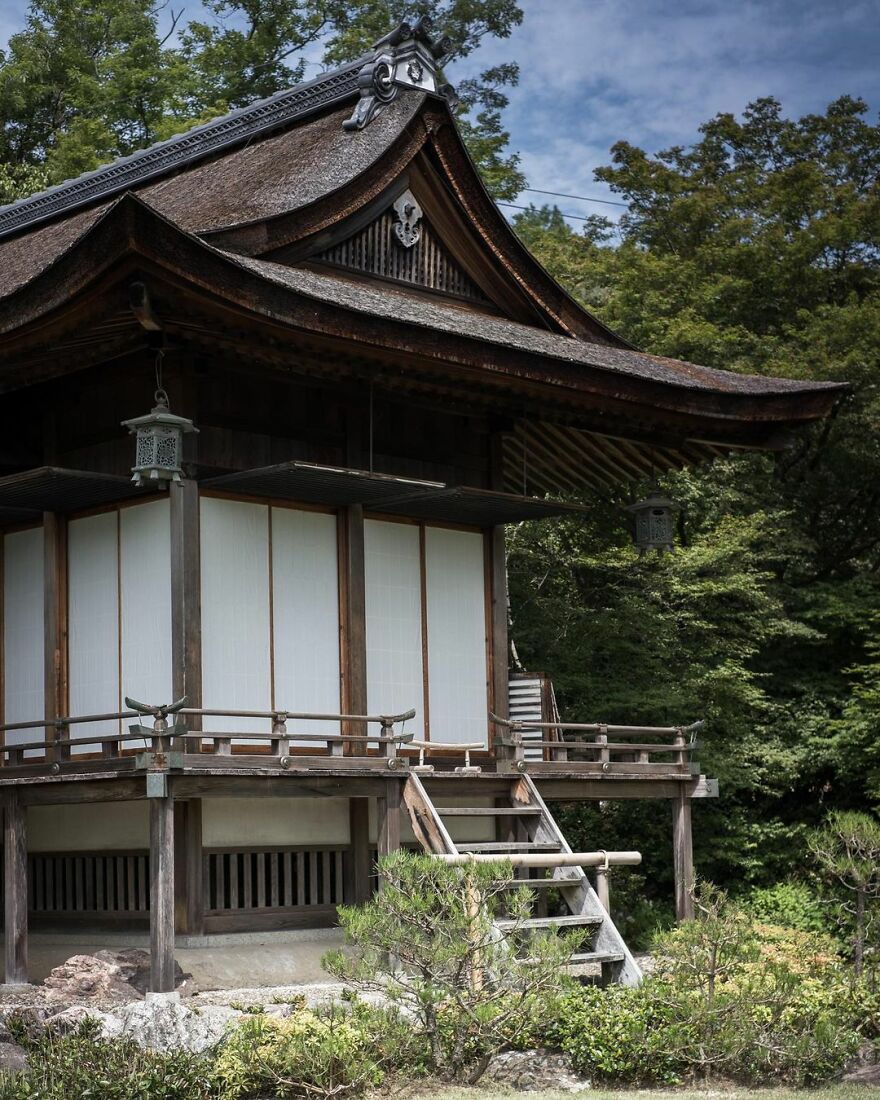
“The former home of actor Denjiro Okochi, famous for starring in many samurai-themed movies. His two-hectare estate sits on the hillside just above the Arashiyama bamboo path and has sweeping views over Kyoto City. His main residence pictured above is called Daijokaku. It was built by Sukiya-zukuri master Kaichiro Usui and was completed in 1941.
The grounds are open to the public as the Okochi Sanso Garden, with an admission fee of ¥1,000 per person.”
japanpropertycentral Report
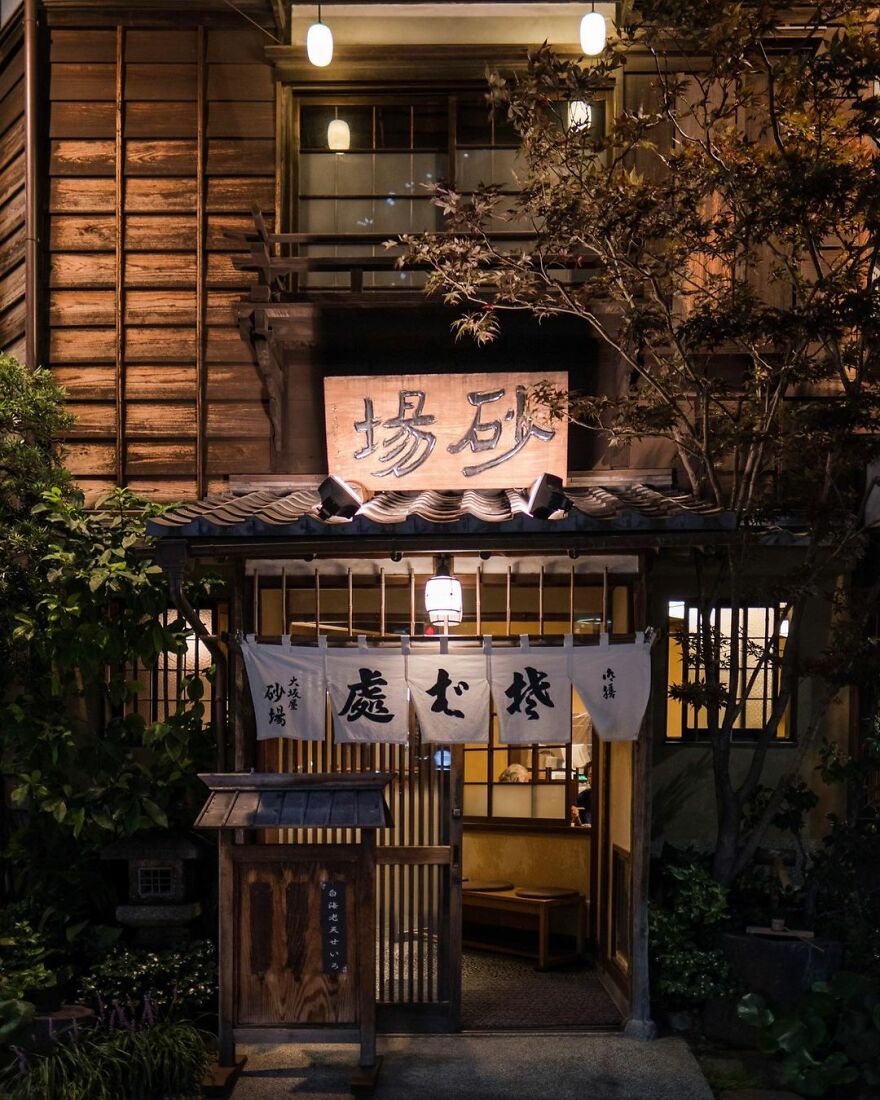
“The Toranomon Osaka-ya Sunaba Soba Restaurant. The current building was completed just before the 1923 Kanto Earthquake, although the restaurant itself has been operating since 1872. It was registered as a Tangible Cultural Property in 2011.”
japanpropertycentral Report
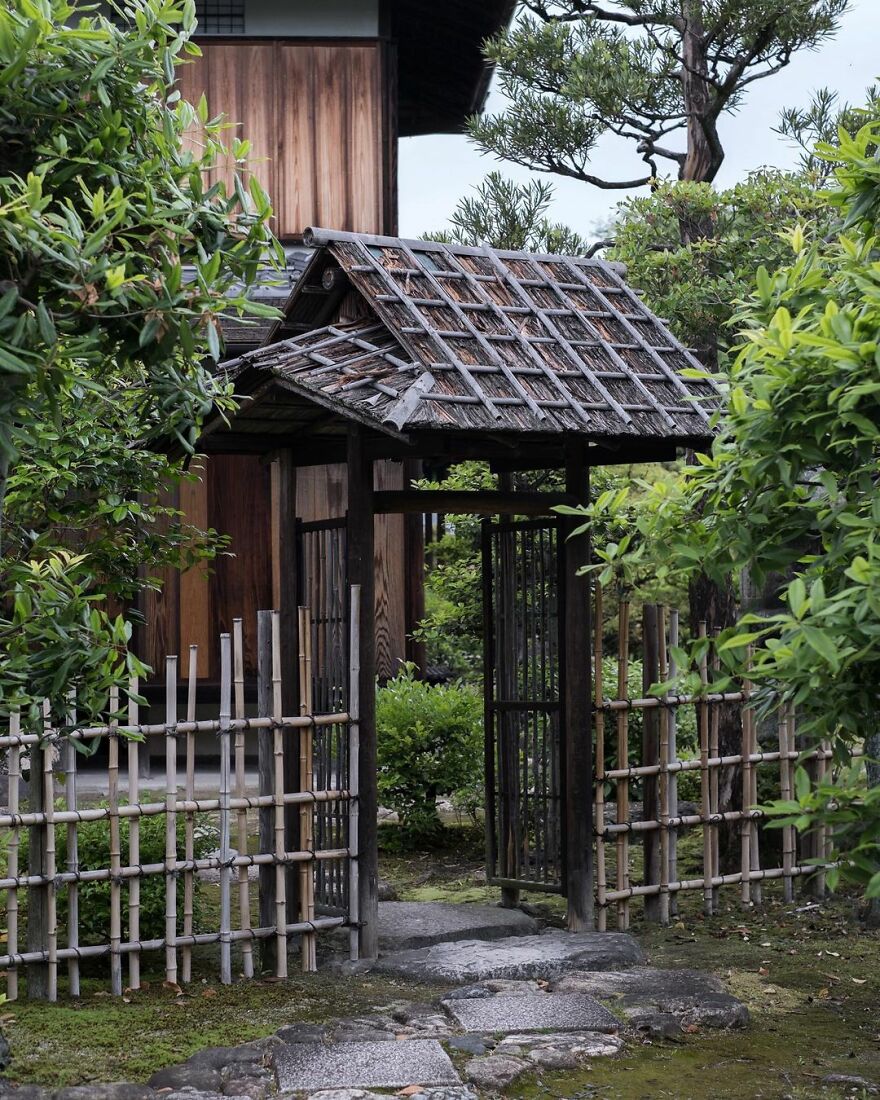
“The entrance to the Ro-an Teahouse in Shōsei-en Garden. The gate leads to a tea garden and represents the delineation of the serenity of the tea ceremony and the chaos of the world outside. This tea house was rebuilt in 1957. The garden and its structures were destroyed twice by fires, once in 1858 and again in the 1864 riot.”
japanpropertycentral Report
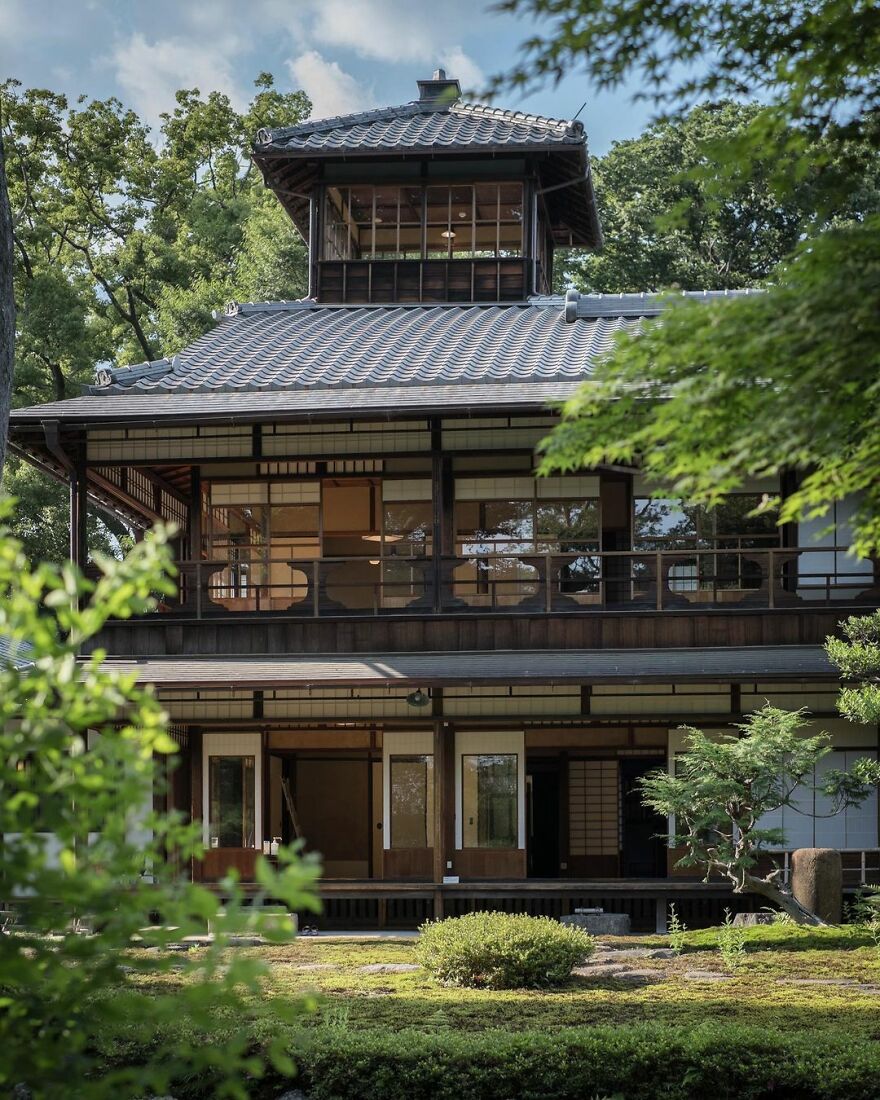
“The former Mitsui Family Shimogamo Villa. Built in 1925, although part of the home dates from the 1880s, having been detached and relocated here from their other, larger villa near Sanjo Street (since demolished). The European-influenced part of the house was the newer portion built in 1925. Despite the grandeur, this home was built as a rest-stop for when they visited their ancestral shrine nearby. The property was transferred to the national government in 1949, and from 1951 to 2007 it was used as the official residence of the president of the Kyoto Family Court.”
japanpropertycentral Report
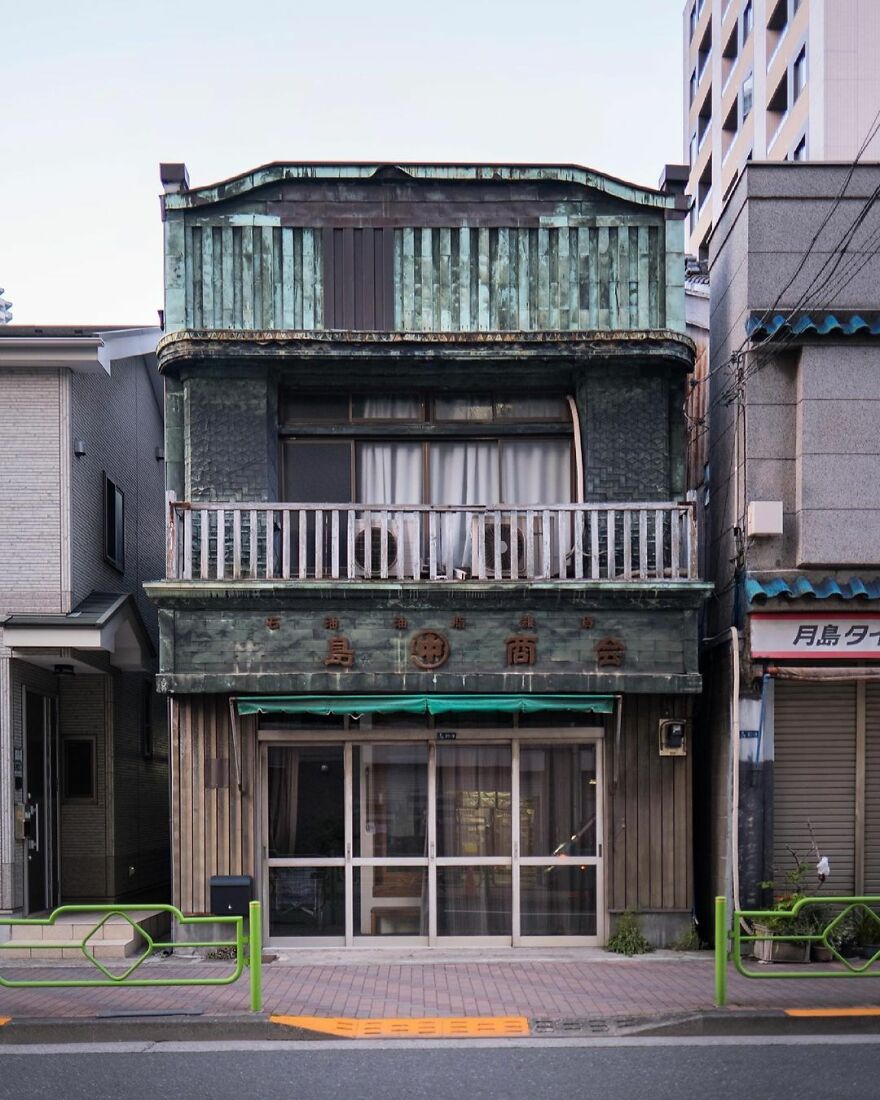
“The merchant house of Nakashima Shokai. Built in 1928. The decorative sheet copper facade is a wonderful example of billboard architecture (kanban-kenchiku).”
japanpropertycentral Report
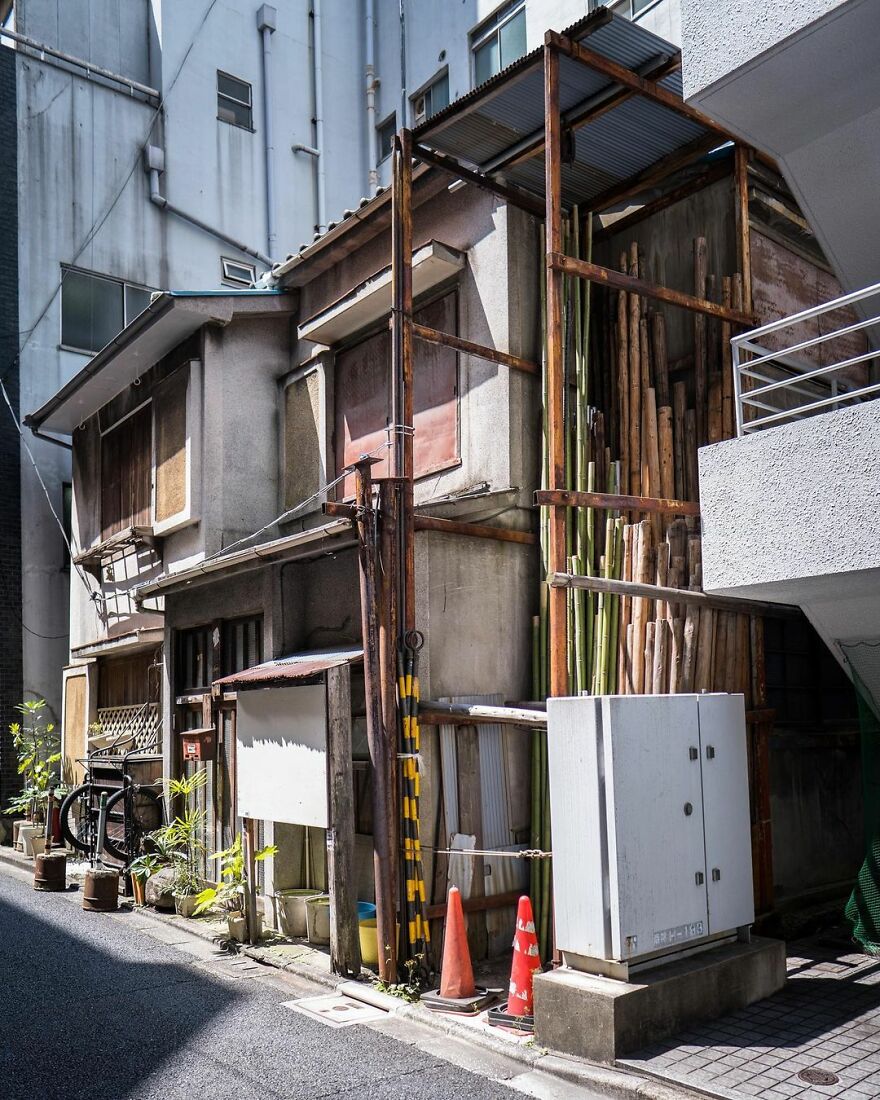
“A traditional setting in Tokyo’s Kanda district. An early postwar house now swamped by office buildings. Miraculously the sun is still able to shine down on the narrow laneway.”
japanpropertycentral Report
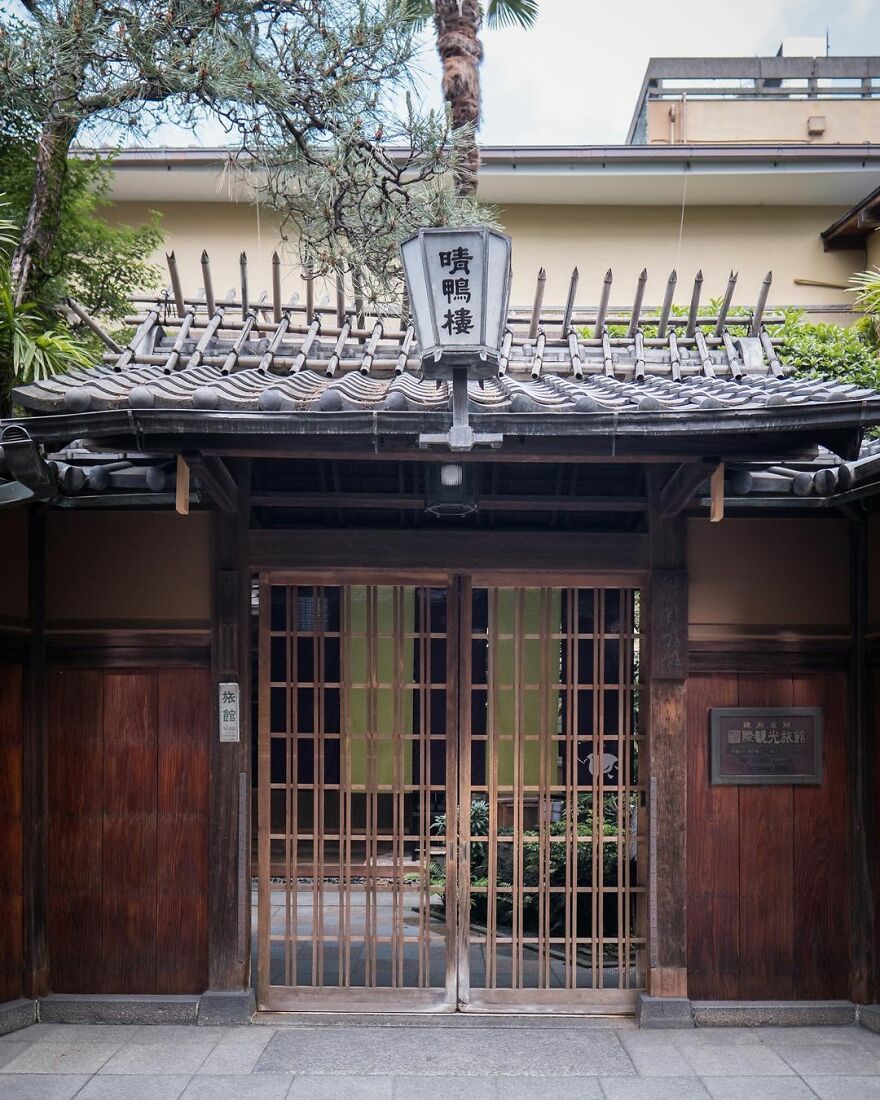
“Seikoro Ryokan, Kyoto. Established in 1831 as a traditional inn. The current buildings date from 1901 and 1921.”
japanpropertycentral Report
Note: this post originally had 100 images. It’s been shortened to the top 30 images based on user votes.
Old Architecture Looks Like In Japan (30 Pics)
- Published in abandon, abandoned, adventure, Architecture, Art, balance, build, buildings, creative, Creepy, culture, decades, eerie, exploration, explore, forgotten, full-page, furniture, harmony, History, home, Homepage featured, idea, International, japan, Japan Property Central, japanpropertycentral, live, memories, mess, modern, old, pass, past, People, period, Photography, photos, project, real estate company, remember, repurposed, reuse, sad, scary, space, stories, story, time, time period, Tokyo, travel, vintage
Cryptocurrency Investing: A Guide to Making Smart Financial Decisions
What is Cryptocurrency:
In the dynamic world of finance, cryptocurrency investing has emerged as a revolutionary force, captivating the attention of investors and enthusiasts alike. As digital assets redefine the traditional financial landscape, navigating the realm of cryptocurrency investing requires knowledge, strategy, and a clear understanding of the opportunities and risks involved. Welcome to “Cryptocurrency Investing: A Guide to Making Smart Financial Decisions,” where we embark on a journey to demystify the intricacies of this exciting and transformative market. From understanding blockchain technology to evaluating investment strategies, join us as we explore the essentials of cryptocurrency investing and equip you to make informed and intelligent financial choices in this new era of digital wealth.
1. Embracing the World of Cryptocurrency Investing

Embracing the world of cryptocurrency investing opens doors to a dynamic and rapidly evolving market. As digital assets reshape traditional finance, understanding crypto prices, trends, and technologies becomes paramount. This journey delves into the complexities and potential of cryptocurrency investments, equipping you with insights to navigate the market with confidence and make informed financial decisions in this exciting landscape.
2. Unveiling the Cryptocurrency Landscape: Understanding Digital Assets

Unveiling The cryptocurrency landscape unveils a realm of digital assets that transcend traditional financial boundaries. From the basics of Bitcoin to the complexities of altcoins, understanding digital assets is essential. This chapter also delves into the intricacies of crypto mining, the process through which new coins are created and transactions are verified, revealing the backbone of many blockchain networks.
3. The Foundation: Exploring Blockchain Technology and Its Impact

The foundation of cryptocurrency investing lies in exploring blockchain technology and its transformative impact. This chapter delves into the workings of blockchain, the decentralized ledger underlying cryptocurrencies. Understanding how blockchain secures transactions and enables innovation is crucial in navigating the crypto market. By grasping this foundation, you’ll be better equipped to analyze trends, evaluate projects, and make informed decisions in the dynamic crypto market.
4. Navigating the Market: Analyzing Cryptocurrency Types and Categories

Navigating the cryptocurrency market involves analyzing the diverse types and categories of digital assets. From cryptocurrencies like Bitcoin to utility tokens and stablecoins, understanding their roles and functionalities is essential. This chapter also emphasizes the importance of staying informed with up-to-date cryptocurrency news, as it plays a pivotal role in shaping market sentiment and guiding investment decisions in this rapidly evolving financial landscape.
5. Risk and Reward: Grasping the Volatility and Potential of Cryptocurrencies

Risk and reward are inherent in the world of cryptocurrencies, where the potential for substantial gains comes hand in hand with volatility. This chapter delves into the dynamics of crypto crashing, exploring market downturns and their causes. By understanding the factors that contribute to price fluctuations, you can develop strategies to navigate through challenging times and seize opportunities in the ever-evolving cryptocurrency landscape.
6. Building a Solid Foundation: Essential Steps Before You Start Investing

Building a solid foundation before entering the world of cryptocurrency investing is crucial. This chapter outlines essential steps to take before you trade crypto. From setting clear investment goals to conducting thorough research, understanding risk management, and choosing reputable platforms, these preparatory actions empower you to approach crypto trading confidently, reducing risks and increasing your potential for success.
7. Investment Strategies: From HODLing to Day Trading

Exploring investment strategies is essential in the cryptocurrency landscape. This chapter delves into various approaches, from the long-term “HODLing” strategy to the active nature of day trading. Understanding risk tolerance, market analysis, and the role of crypto exchanges is vital for choosing the right strategy for your goals. By honing your approach, you can navigate the crypto exchange market with a clear direction.
8. Research and Due Diligence: Making Informed Investment Decisions

Research and due diligence are cornerstones of informed cryptocurrency investment decisions. This chapter emphasizes the importance of thorough investigation before diving into the market. From analyzing whitepapers to evaluating teams and technology, understanding the role of a cryptocurrency miner, and staying updated on industry trends, these practices empower you to make educated choices in the complex and ever-evolving world of digital assets.
9. Diversification: Spreading Risks Across Cryptocurrency Portfolios

Diversification is a key principle in managing risk within cryptocurrency portfolios. This chapter explores the strategy of spreading investments across various digital assets to mitigate potential losses. It also emphasizes the value of engaging with the cryptocurrency Reddit community, where discussions, insights, and perspectives from fellow enthusiasts can aid in making well-informed decisions and navigating the intricate world of digital currencies.
10. Security First: Safeguarding Your Investments from Cyber Threats

Prioritizing security is paramount in safeguarding your cryptocurrency investments from cyber threats. This chapter delves into strategies for protecting your holdings against hacks, phishing, and various cryptocurrency scams. From utilizing secure wallets to practicing two-factor authentication and staying vigilant about potential threats, understanding the intricacies of online security ensures your investments remain safe in the dynamic digital landscape.
11. Staying Legal and Tax-Compliant in Cryptocurrency Investments
Staying legal and tax-compliant in cryptocurrency investments is vital. This chapter covers legal considerations, regulations, and tax implications related to digital assets. Understanding how to report earnings and losses accurately is crucial. It also emphasizes the importance of maintaining a secure cryptocurrency wallet, not only for protecting your investments but also for securely managing your transactions within the evolving legal framework.
12. Market Trends and Analysis: Reading the Signs and Making Predictions
Market trends and analysis are pivotal in successful cryptocurrency investing. This chapter delves into technical and fundamental analysis, providing insights into reading market signs and making informed predictions. Understanding price charts, indicators, and sentiment analysis is essential. Additionally, utilizing a reliable crypto trading platform enables you to execute trades seamlessly and capitalize on opportunities in the fast-paced world of digital asset trading.
13. Long-Term Vision: Evaluating Cryptocurrency’s Role in the Future of Finance
Evaluating cryptocurrency’s role in the future of finance requires a long-term vision. This chapter delves into the potential impact of digital assets on traditional financial systems and economies. From decentralized finance (DeFi) to blockchain adoption, understanding the transformative possibilities empowers investors to position themselves strategically in an evolving landscape, where cryptocurrencies may shape the very foundations of global finance.
14. Case Studies: Learning from Cryptocurrency Investment Successes and Failures
Case studies offer invaluable insights into cryptocurrency investment successes and failures. This chapter examines real-world examples of individuals and projects, highlighting their strategies, challenges, and outcomes. Learning from these cases provides practical knowledge that can guide your decision-making process. By understanding both the triumphs and setbacks in the cryptocurrency world, you can refine your approach and navigate the market with enhanced wisdom.
Conclusion: Equipped for Smart Financial Decisions in Cryptocurrency Investing
In conclusion, this guide equips you with smart financial decisions in cryptocurrency investing. From understanding the technology and market dynamics to exploring diverse investment strategies and safeguarding your assets, you’ve gained a comprehensive understanding of the cryptocurrency landscape. By applying the knowledge and insights gained, you’re well-prepared to embark on a journey of informed decision-making and potential success in the exciting world of cryptocurrency investments.
Cryptocurrency Investing: A Guide to Making Smart Financial Decisions
- Published in Crypto, crypto currency, Economic Zone, ECONOMY, Featured, Featured Articles, Tokyo, top Featured, trend, Trends, uk, ukraine, US, USA, viral, Worldwide, Zillow

